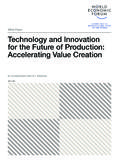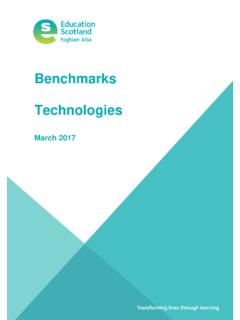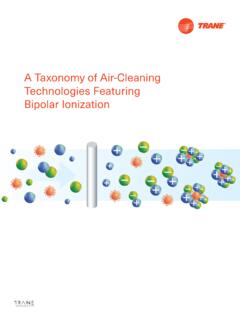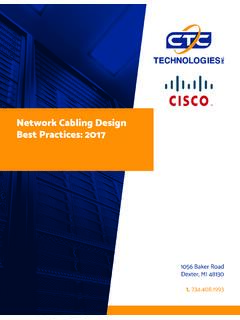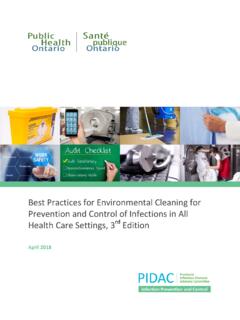Transcription of Challenges and solutions when using technologies in the ...
1 Challenges and solutions when using technologies in the classroom Amy M. Johnson, Matthew E. Jacovina, Devin G. Russell, and Christian M. Soto Arizona State University Johnson, A. M., Jacovina, M. E., Russell, D. E., & Soto, C. M. (2016). Challenges and solutions when using technologies in the classroom. In S. A. Crossley & D. S. McNamara (Eds.) Adaptive educational technologies for literacy instruction (pp. 13-29). New York: Taylor & Francis. Published with acknowledgment of federal 's NoteThe authors would like to recognize the support of the Institute of Education Sciences, Department of Education, through Grants R305A130124 and R305A120707, and the Office of Naval Research, through Grant N00014140343, to Arizona State University.
2 The opinions expressed are those of the authors and do not represent views of the Institute or the Department of and solutions when using technologies in the classroom Amy M. Johnson, Matthew E. Jacovina, Devin G. Russell, and Christian M. Soto Arizona State University to appear in Crossley, & McNamara, (in preparation). Adaptive Educational technologies for Literacy Instruction. Taylor & Francis, Routledge: NY. Introduction Technology is perhaps the strongest factor shaping the educational landscape today.
3 Many school districts are showing support for increased levels of technology in the classroom by providing hardware such as tablets and computers, enhancing internet connectivity, and implementing programs designed to improve computer literacy for both teachers and students. Although teachers generally appreciate the benefits of educational technologies , they often find smooth and effective integration of new educational technologies challenging. From acquisition of new technology equipment to adaptation of curricula and teaching techniques to incorporate new educational tools, technology integration presents significant Challenges to educators at each level of school systems.
4 The purpose of this chapter is to present common Challenges faced by educators when attempting to integrate technology in the classroom, and offer potential solutions to those problems. Examination of these issues should be valuable to current and future educators, school administrators, as well as educational technology researchers. The chapter begins by introducing the Challenges to technology integration that are external (extrinsic) to the teacher, including access to resources, training, and support.
5 We then present barriers that are internal to teachers, including their attitudes and beliefs, resistance toward technology in the classroom, and their knowledge and skills. The next section presents international perspectives on the technology integration problem, focusing on a case in Chile. The chapter concludes with a short summary of the chapter and condensed recommendations for effective technology implementation. External Challenges to Classroom Technology First-order barriers to the successful integration of technology into the classroom are factors external to teachers implementing technology.
6 External barriers must be addressed at the institutional level and changes are typically incremental ( , rolling out access to technology one level at a time). Although there is growing evidence that, in the United States, first-order barriers are being tackled (Ertmer, Ottenbreit-Leftwich, Sadik, Sendurur, & Sendurur, 2012), more effort is needed to entirely overcome these Challenges . In this section, we introduce some of the external barriers to classroom technology integration and present strategies to address them.
7 First, we address issues surrounding insufficient equipment or connectivity, termed the access constraint. If a teacher s school does not possess adequate computers and fast internet connection, the implementation of educational technology is not feasible. Next, we introduce the challenge of inadequate training related to technology. If teachers are not provided effective professional development on new technologies , they will not be capable of using it to its full potential. Finally, we discuss factors related to the support constraint.
8 Support barriers to technology integration include inadequate technical support and administrative/peer support. Access Early accounts of technology integration focused much of their interest on increasing the availability of computers in schools (Fisher, Dwyer, & Yocam, 1996). Certainly, the most basic step toward effective technology integration is widespread access to equipment necessary to run educational computer programs. If computer lab time is limited to one hour per week, persistent use of educational technology is not viable.
9 While many schools across the country are making the transition to one-to-one (1:1) computing (Warschauer, Zheng, Niiya, Cotton, & Farkas, 2014), many students do not have regular and reliable access to a computer. Inconsistent computer access makes it extremely difficult for instructors to integrate technology into existing lesson plans. Routine access to hardware ( , laptops or tablets), software ( , reading and writing software, internet browsers), and internet connection is a fundamental requirement.
10 Research demonstrates that much progress had been made to improve equipment and internet access in schools over the last 20 years. Results from the National Center for Education Statistics (NCES) 2009 survey of public school teachers revealed that 97% of all teachers have at least one computer in their classroom every day (Gray, Thomas, & Lewis, 2010). Compare this result to the 1999 survey which found that only 84% of public school teachers had computers available in the classroom (Smerdon, Cronen, Lanahan, Anderson, Ionnotti, & Angeles, 2000).












